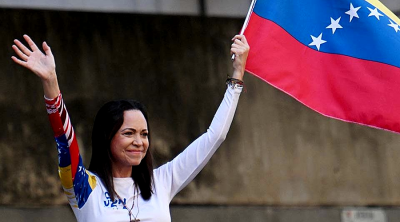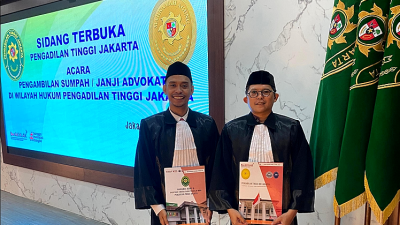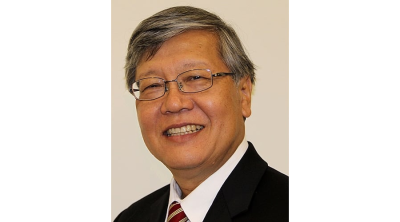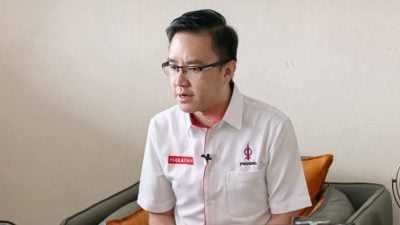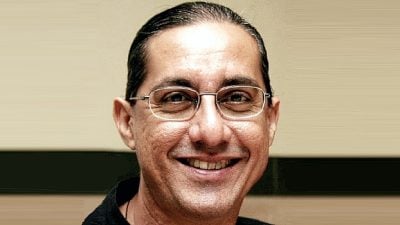
In recent years, the concept of ‘influencer farms’ has taken center stage, leaving many to question their existence and operations. Do influencer farms really exist? And how exactly do they operate?
The term ‘influencer farms’ refers to places where aspiring influencers receive training and collaborate closely to create online content.
This phenomenon has been a well-established practice in China, Indonesia, South Korea and other Asian countries since 2022, where livestreamed e-commerce generates a multi-billion dollar industry.
As it gained widespread attention in 2023, the practice has stirred online controversy from observers who perceive it as a growing sense of dystopia.
What is an ‘influencer farm’?
One of the earliest instances where the concept of an ‘influencer farm’ strategy gained attention was in a Wall Street Journal article titled “China’s Influencers—Moms, Farmers and Even Dogs—Hawk Their Wares on Live Streams,” published on December 8, 2019. This article sheds light on how, in China, where consumers are cautious about counterfeit products, online influencers have become a trusted source and a significant driving force for retailers.
The term ‘influencer farm’ was officially coined on September 16, 2022, by journalist Suzy Gardner in an article published on Koreaboo.
Drawing insights from a New York Times article by David Borenstein, Gardner dives deeper into influencer farms that prioritize financial gains and often lead their stars to sacrifice a life outside their livestreams.
The strategy of influencer farms
Influencer farms, also known as influencer incubators, primarily focus on driving sales and maintaining high revenue streams.
One of the earliest mentions of the influencer farm strategy was highlighted in a December 2019 Wall Street Journal article, which explains that in China, many consumers are wary of fakes and traditional advertising. So, online influencers have become a trusted source and a key driving force for retailers, leading some companies to shift to primarily influencer-based marketing methods.
The ‘farm’ strategy became a trending topic on February 11, 2023, when thousands of influencers gathered under a bridge in China.
This phenomenon was later explained by one observer on X (previously known as Twitter), who pointed out that streaming platforms allowed users to target wealthier neighborhoods, resulting in higher donations for streamers. Her post garnered over 18 million views and 21,900 likes within seven months.
To understand the driving force behind influencer farms, we must look at the live shopping industry.
This marketing strategy revolves around livestreaming, where influencers present products for viewers to purchase in real-time.
Few people in the Western world have heard of Ruhan, but the Chinese company has emerged as one of several ‘influencer incubators’, transforming the face of e-commerce in the country.
Occupying a gray highrise in a drab part of industrial Hangzhou, the operation can be seen as the gears that keep online influencers—known as KOLs, or “key opinion leaders”—churning out content during hectic eight-hour daily shifts.
There, influencers livestream content in cramped studios stuffed next to each other like factory farm chickens in empty warehouses. Each studio is equipped with tripods, ring lights, and a webcam, and hundreds of workers answer customer service inquiries, handle logistics, and edit photos for Ruhan’s vast stable of stars.
These incubator operations are becoming increasingly common as China continues to embrace livestreaming platforms such as Taobao, owned by the country’s Amazon equivalent, Alibaba, where influencers sell fashion and cosmetics products to online shoppers on the internet’s version of the QVC network.
China’s livestreaming e-commerce market skyrocketed by more than 280% between 2017 and 2020, reaching an estimated US$171 billion in value.
The pandemic only escalated its rise, with sales expected to surpass US$500 billion in 2022, according to Coresight Research.
By June 2020, the country had recorded 309 million livestreaming consumers, accounting for one-third of its Internet users.
These farms prioritize income and guide their stars at the expense of a life outside their streams.
A video by the New York Times published in April 2021 takes the viewer through a day in the life of one of these influencers.
The New York Times Op-Docs video follows the live streamer Jin He, an aspiring musician who was swept up in this farming system. The video shows how the farming company has curated her entire image, which reflects little to no authenticity.
They say they have high hopes for the live streamer, who currently makes up to USD 45,000 per month solely from donations received during her livestreams. In the video, Jin He expresses how tired she is because she has no free time and can go months without a day off.
The farming company also receives revenue from these donations. While Jin He’s experience shows one side of influencer incubation, according to various articles covering the phenomenon, the main reason for the creation of these influencer farms is the live shopping industry.
Earlier on August 22, 2023, an article titled “Asia’s ‘influencer farms’ are dystopian, but America isn’t much better” by writer Katherine Dee was published on the site UnHerd. The piece details how the influencer farms have spread throughout other Asian countries, showcasing a video posted by a X user on August 20, in which he shows a “Social selling factory in Indonesia” (shown below). The post amassed over 7.5 million views and 24,700 likes in a week.
Social selling factory in Indonesia 🤯
This is UGC industrial mass production. This is a freaking factory.
Selling things online is changing so fast. Everything is changing so fast.
This is unreal pic.twitter.com/8rig77MGuR
— Linus (●ᴗ●) (@LinusEkenstam) August 20, 2023
Why is it a lucrative choice for young women?
The competition to be the next star influencer is hot, thanks partly to high visibility, healthy paychecks, and the outwardly glamorous lifestyle it affords. Research from Chinese tech company Tencent shows that 54% of college-aged respondents picked “online celebrity” as their top career choice.
Ruhan executives tend to favor up-and-coming young women who appeal to their own demographic. Perhaps the most famous is Viya, whose success was largely bolstered by the incubator Xinhe.
With more than 80 million followers, the 36-year-old celebrity was able to sell US$8 billion worth of goods on Taobao—equivalent to a third of the global sales reported by the American department store Macy’s—before authorities removed her account and fined her US$210 million for tax evasion as part of a broader crackdown.
“You have companies that are literally trying to train thousands of young women to become livestreamers, teaching them how to talk, how to do more flattering lighting, or whatever it is,” Kim Leitzes, the founder of KOL marketplace ParkLu, tells Business of Fashion.
“Then you have Ruhan—its history and core are as an apparel manufacturer, and so what they provide is the whole supply chain, products, merchandising, research, support, and manufacturing.”
Do influencer farms exist in the US?
Interestingly, influencer farms, as seen in Asia, do not exist in the same form in the United States.
The Western world, with its distinct cultural preferences, has yet to adopt these practices to the same extent. This is primarily because they don’t align with the preferences of American audiences.
While there has been speculation about American viewers being influenced by various tactics such as Russian bot farms, misleading filters affecting self-esteem, undisclosed #sponsored content, bizarre YouTube content creators, and, more recently, AI-driven influencers, all of which hint at a peculiar zone where content appears almost but not-quite-human content.
Yet, the US is no less susceptible to consumer trends and, more seriously, propaganda. So why have these influencer farms yet to gain significant traction there?
In the United States, online personalities occupy a unique emotional space. They create an illusion of intimacy between the influencer and the users.
And while American influencers may be sponsored by corporations, there is a stronger emphasis on the parasocial element of social media content. Well-known examples include the ever-controversial Dylan Mulvaney or Mikayla Nogueira, who frame themselves as ‘friends-in-waiting’.
We’ll take their lipstick recommendations, but we’ll also listen to stories about their carnal experiences — often affording them more time than we would our actual friends.
Americans crave a certain unvarnished authenticity, even when it’s completely scripted, as with The Kardashians.
Parasocial relationships: East vs West
In the realm of influencer farms, the dynamics of parasocial relationships manifest differently between Eastern and Western audiences. These two distinct cultural landscapes shape how audiences engage with online personalities and, consequently, how influencer farms operate.
While Americans crave authenticity, even in scripted content, Asian audiences are more inclined toward straightforward content. This difference is exemplified by the emergence of 24/7 livestream entertainers in Asia.
In East Asia, particularly in countries like China and South Korea, parasocial relationships tend to lean towards a collective attachment model.
Audiences in this region often perceive online influencers as part of a larger community or family. The influencer, or ‘streamer’, is not merely an individual but rather a figurehead who represents a shared identity or lifestyle.
This collectivist approach is reinforced by influencer farms that meticulously craft a brand or persona, emphasizing harmony and group cohesion.
Viewers in the East often feel a sense of belonging to a community centered around the influencer’s content. These influencer farms leverage this connection to drive sales and promote products, capitalizing on the trust and loyalty generated within this communal parasocial relationship.
In contrast, Western audiences tend to favor a more individualized intimacy model in parasocial relationships.
Here, viewers develop a strong personal connection with the influencer as an individual, often feeling as though they have a one-on-one relationship with them.
Western influencers frequently share their personal lives, struggles, and experiences, which makes viewers feel emotionally invested in their journey.
Unlike in the East, where influencers represent a collective identity, in the West, the influencer is a relatable persona. This personal bond often results in higher levels of engagement, including merchandise purchases and donations to support their favorite influencers.
Navigating these cultural disparities is key for influencer farms aiming to thrive in a globalized digital landscape.
The dystopian nature of it all
As we scrutinize the influencer farms of Asia and the contrasting preferences of the Western world, it becomes evident that these ecosystems are not merely about marketing products.
In a digital era where the search for authenticity and connection intertwines with commercial aspirations, we find ourselves in places we haven’t been before.
Our ability to differentiate between what’s real and what’s just for show, both online and in real life, will shape not only our online experiences but also our evolving understanding of human connection in the digital age.
As we navigate this ever-changing landscape of influencer farms and online personas, one question lingers— Are these influencer farms any more dystopian than the faux intimacy we share with our social media stars in the West?
The boundary between our online lives and reality has become increasingly blurred, leaving us to ponder the unsettling aspects of our digital world.
In a world where parasocial relationships are replacing genuine human bonds, the distinction between our online and offline lives becomes ever more challenging to discern—a sobering thought for the age of social media.
ADVERTISEMENT
ADVERTISEMENT









